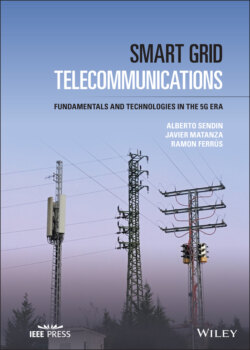Читать книгу Smart Grid Telecommunications - Ramon Ferrús - Страница 16
1.2.1 Electricity
ОглавлениеElectricity is the universal and standard way to transform energy and get it transported everywhere and to everyone. Electricity, as the object of the grid, exhibits a series of properties that justify the complexity of the system behind it.
The size and geographic extension of electric power systems are conditioned by their scope, as a consequence of the purpose of carrying the energy from the places where it is most conveniently produced to the places where it is needed. This is achieved by means of a network (the grid, i.e., Transmission and Distribution) of interconnected elements (e.g., generation systems, power lines, substations) spread over necessarily large geographical areas and integrated to work as a whole.
Electricity, as a product, cannot in practice be stored or shipped in containers. Despite the technological advances in electric batteries and other storage apparatus, handling any amount of energy comparable to a representative percentage of the system's dimension is nowadays still far from feasible (performance aspects, and other limiting factors, may be solved in the future). Thus:
Electricity must be generated and transmitted to be consumed, involving a necessary real‐time dynamic balance between generation and demand.
Electric power pathways cannot be chosen freely across the network, as it is physics (Kirchhoff's laws) that determines, depending on the impedances in the power lines and the rest of the grid elements, where electricity flows. Thus, the current distribution cannot easily be forced to take any given route, and alternative routes in the grid are highly interdependent.
From an operational perspective, deviations from normal operation may cause the instantaneous reconfiguration of power flows that may have substantial effects on facilities (e.g., substations, power lines, etc.) in the grid and propagate almost instantaneously across the entire system.
Finally, electric power consumption is sensitive to the technical properties of the electricity supply, to the extent that devices may malfunction or simply cease to operate unless the voltage wave is stable over time within certain parameters including shape (sinusoidal), frequency (cycles per second), and value (voltage). The system must have mechanisms to react (detect and respond) instantly to unexpected situations and avoid degradations in service quality.
